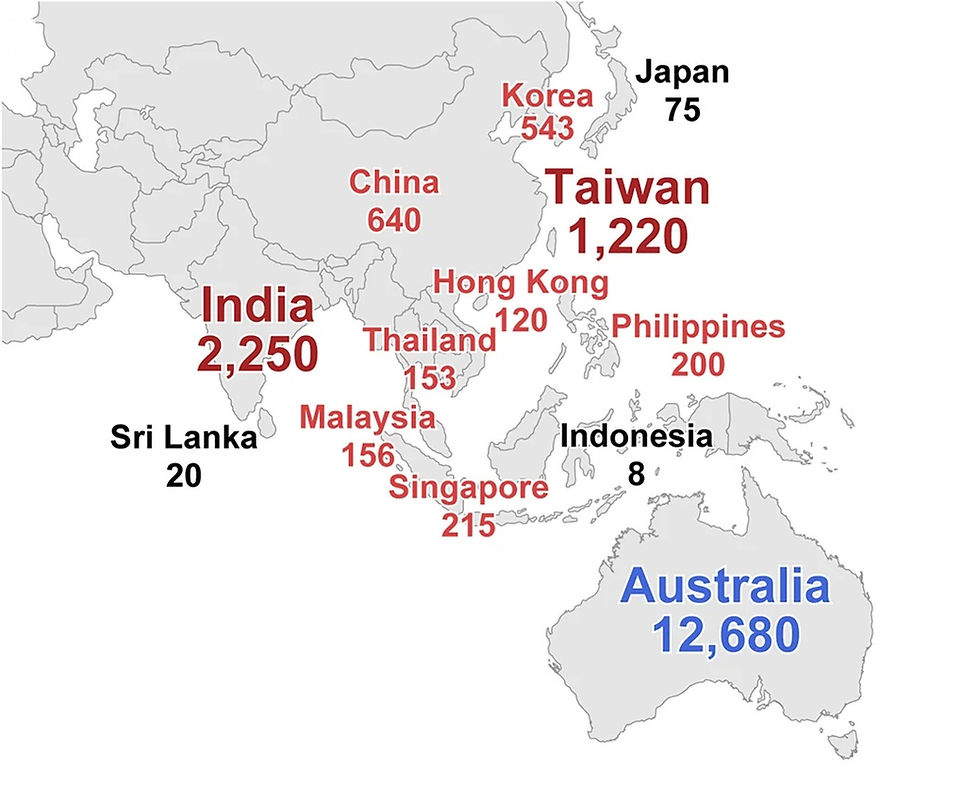Laparoscopic devices market size to grow to US$13.7 billion by 2030
- owenhaskins
- Jul 8, 2022
- 3 min read
Updated: Jul 12, 2022
The global laparoscopic devices market size is expected to reach around US$13.7 billion by 2030 and is anticipated to grow at a CAGR of 8.9% during forecast period 2022 to 2030, according to Vision Research Reports. Increasing number of bariatric surgeries being performed and adoption of minimally invasive procedures are anticipated to boost the market growth. Increasing preference by surgeons for laparoscopic surgery owing to the benefits, such as small incisions, less healing time, and short hospital stay, is also driving the market.

Surgery with laparoscopy devices has been a highly preferred method of treatment in the past few years among healthcare providers across the world. A study conducted at the Johns Hopkins University School of Medicine in Maryland concluded that urban hospitals were performing laparoscopic appendectomies four times more than rural hospitals, and were likely performing 15 times more minimally invasive hysterectomies than rural hospitals.
According to the American Congress of Obstetricians and Gynecologists (ACOG), the rate of minimally invasive hysterectomy procedures conducted in the US increased from an estimated 14% in 2004 to 53% in 2013. According to the American Society of Plastic Surgeons, an estimated 20 million surgical procedures were performed across the world in 2014, and 52% of these were minimally invasive surgeries.
In 2021, the report found:
The energy systems segment dominated the market for laparoscopic devices and captured the largest revenue share of around 21.55%.
The hospital segment dominated the market for laparoscopic devices and accounted for the largest revenue share of 61.7%.
The other surgeries segment dominated the market for laparoscopic devices and accounted for a revenue share of around 22.88%.
North America dominated the laparoscopic devices market and accounted for the highest revenue share of 34.67%.
US health care spending increased by 9.73% and reached USD 4.2 trillion in 2020, accounting for approximately 19.75% of the GDP.
By product, the US laparoscopic devices market was valued at US$1.94 billion in 2021 and expected to witness growth at a CAGR of 7.3% from 2022 to 2030.

By 2030, the report predicts growth:
In the Asia Pacific market for laparoscopic devices is expected to witness a CAGR of 7.21% during the forecast period.
In the bariatric surgeries segment is expected to witness the highest CAGR of 7.77% during the forecast period.
In the ambulatory surgical centres’ segment is expected to witness the highest CAGR of 7.15% during the forecast period.
In the insufflation device segment is expected to witness the highest CAGR of 7.93% over the forecast period.
North America dominated the laparoscopic devices market and accounted for the highest revenue share of 34.67% in 2021. Increasing dependence on laparoscopic surgeries compared to open surgeries is a major factor driving the market. In addition, competition among prominent players, related to product innovation, will also impact the market for the laparoscopic device. Furthermore, surgeons are now recommending laparoscopy over traditional surgeries, as it allows for rapid healing and positive outcome. In addition, increasing healthcare expenditure in the U.S. may also favour the entry of both new and old players. For instance, as per the Centers for Medicaid and Medicare Services, US health care spending increased by 9.73% and reached USD 4.2 trillion in 2020, accounting for approximately 19.75% of the GDP.
In the Asia Pacific, the market for laparoscopic devices is expected to witness a CAGR of 7.21% during the forecast period owing to an increase in the number of advanced, well-equipped hospitals and a large number of surgical procedures are boosting the market growth in the Asia Pacific over the forecast period. Singapore and South Korea are some of the emerging economies in the Asia Pacific region. Advancing technology, increasing investment, improving reimbursement scenarios, and growing medical tourism are likely to drive the market in the region. Other driving factors for the country are affordable devices, an increase in mergers and acquisitions, and government initiatives to improve healthcare services. The government has made significant investments to provide basic health insurance to all citizens.
For more information, please click here





Comments